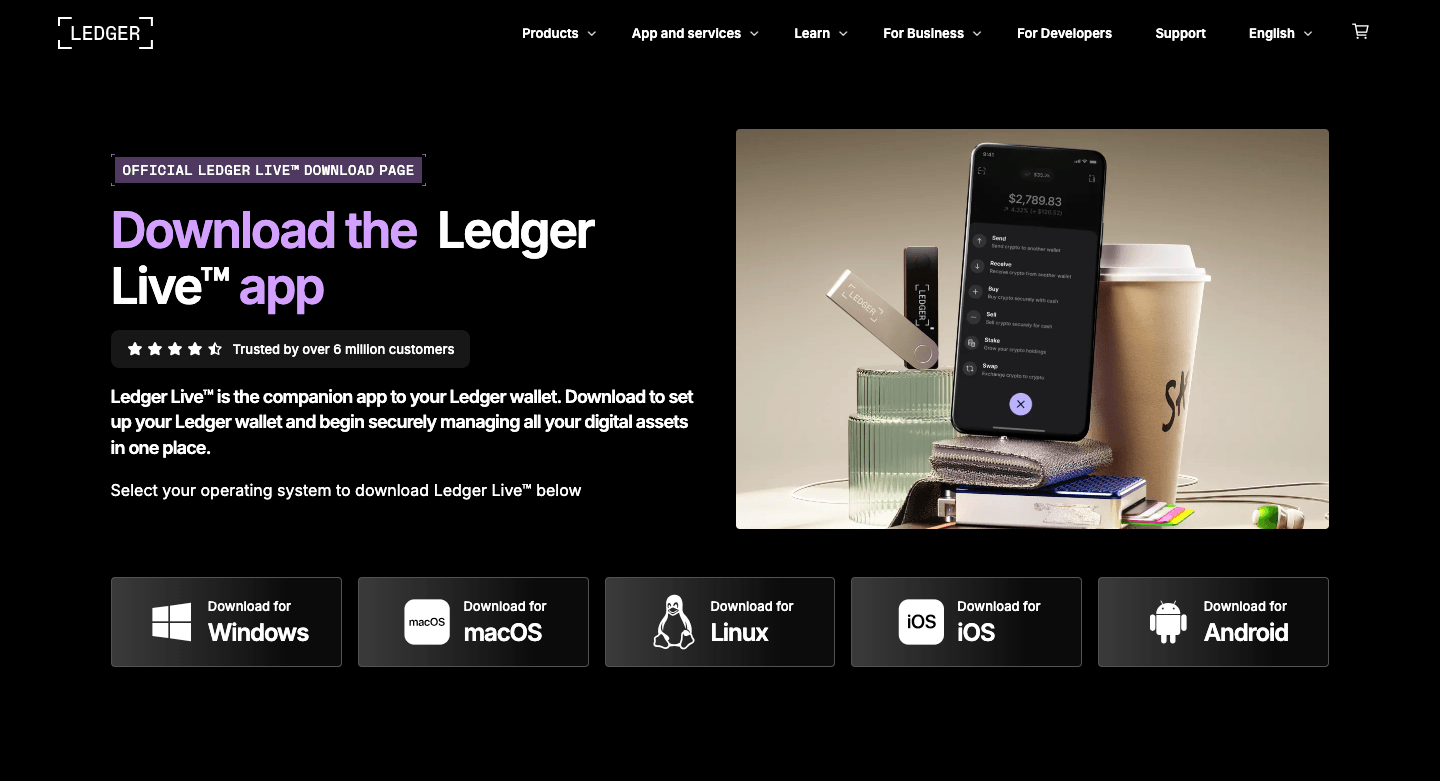

Official Site® | Ledger.com/Start® | Getting started
The process begins with a simple but important step: downloading Ledger Live, Ledger’s official
Ledger.com/Start Using [Keyword] for Business Transactions
When you visit ledger.com/start for the first time, you enter Ledger’s official onboarding process — the one and only safe place to initialize your Ledger hardware wallet, download Ledger Live, and ensure your device is running genuine firmware. For businesses looking to manage crypto securely, this is the foundation for any transaction workflow involving [Keyword]. The page is designed for both individuals and organizations, but the same security principles apply regardless of the size of your operation.
The process begins with a simple but important step: downloading Ledger Live, Ledger’s official management application. Available for Windows, macOS, Linux, Android, and iOS, Ledger Live is where you’ll set up accounts, monitor balances, and execute transactions. For businesses, the desktop version is generally preferred for its stability, multiple account handling, and ability to integrate with accounting or treasury workflows. Once Ledger Live is installed, you connect your hardware wallet via USB or, if using a Bluetooth-enabled model like the Nano X, pair it wirelessly.
During this first connection, Ledger Live will check if your device has the latest firmware. This is a critical security measure — older firmware could have vulnerabilities, so updating ensures you have the most recent protections. Businesses, in particular, should view firmware updates as part of regular operational security, much like updating antivirus software or renewing SSL certificates. Once the firmware is confirmed or updated, Ledger Live authenticates your device, making sure it is a genuine Ledger product.
Next comes wallet initialization. You can either create a brand-new wallet or restore an existing one from a recovery phrase. If your business is setting up its first hardware wallet for [Keyword]-related transactions, you’ll choose to create a new wallet. This process generates a recovery phrase — 24 words that serve as the cryptographic root of your wallet’s security. For companies, it’s crucial to have a clear, documented process for securely storing this phrase, potentially involving multiple trusted team members and secure, offline storage. Any party with access to this phrase has full control over the funds, so access control policies are essential.
Once the recovery phrase is backed up, the next step is setting a PIN code directly on the device. This acts as a lock screen for the hardware wallet, preventing unauthorized use if the device is lost or stolen. For business use, the PIN should be known only to authorized transaction signers, and it should be documented securely in case of personnel changes.
With security foundations in place, you then use Ledger Live to add accounts for the cryptocurrencies you plan to handle with [Keyword]. If [Keyword] represents a specific asset, payment system, or DeFi platform, this is where you ensure your Ledger is configured to support it. Ledger Live supports a wide range of coins natively, and for assets not directly supported, you can connect your Ledger to third-party apps while still keeping private keys inside the device. For businesses, separating accounts by department, transaction type, or client project can make bookkeeping and auditing much simpler.
Once accounts are added, your business can begin conducting transactions. Ledger Live makes it straightforward to receive payments — you generate an address from the relevant account, which can then be shared with clients or partners. For outgoing business payments involving [Keyword], the process requires signing each transaction on the Ledger device itself. This is where the hardware wallet truly proves its worth: even if the connected computer is compromised, the transaction details must be reviewed and physically approved on the Ledger device before they are broadcast to the blockchain. This eliminates a large class of potential attacks, making it highly suited for high-value business transactions.
Ledger.com/start also provides links to detailed guides on integrating Ledger devices into larger business systems. This includes connecting to DeFi platforms, staking assets, and even linking with corporate treasury solutions. If your business uses [Keyword] in a way that involves interacting with decentralized apps, Ledger can serve as the secure approval layer. This means every contract interaction — from sending tokens to approving a smart contract — requires explicit device confirmation.
Security policies should also extend to ongoing use. For example, in a business setting, it’s advisable to maintain separate Ledger devices for different operational roles — such as one dedicated to receiving client payments, another for paying vendors, and perhaps a third for long-term asset storage. This segmentation can limit exposure in case of a security breach. Ledger Live also supports multiple devices, allowing a centralized view of all business wallets without mingling keys.
Another advantage for businesses using Ledger with [Keyword] is compliance and reporting. Ledger Live can export transaction histories for each account, which can then be fed into accounting software or tax reporting tools. This makes reconciling crypto transactions much easier, a necessity for any business handling digital assets at scale.
Ultimately, starting at ledger.com/start ensures that your business begins its journey with [Keyword] on a foundation of verified security and best practices. From the first firmware check to the moment you confirm your first payment, every step is designed to put control — and responsibility — in your hands, not in the cloud or on a third-party server. For business transactions, this translates to reduced risk, clearer accountability, and greater confidence when dealing with partners and clients in the cryptocurrency space.
By following the official onboarding process, integrating Ledger devices into your workflows, and aligning with sound operational security, you can make [Keyword]-related business transactions both efficient and resilient. Ledger provides the hardware; your team provides the discipline. Together, they form a secure bridge between traditional business operations and the fast-evolving world of blockchain-based commerce